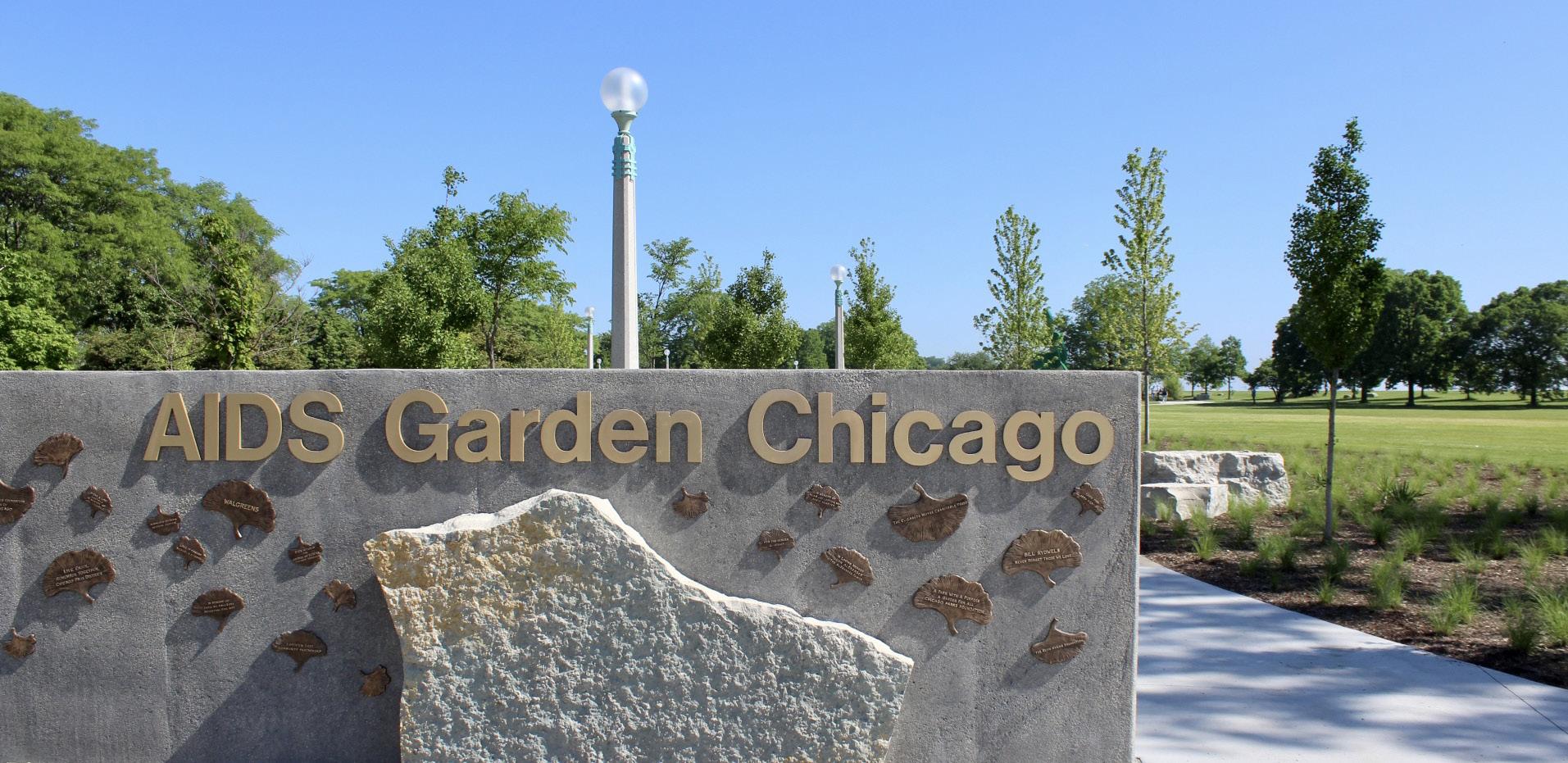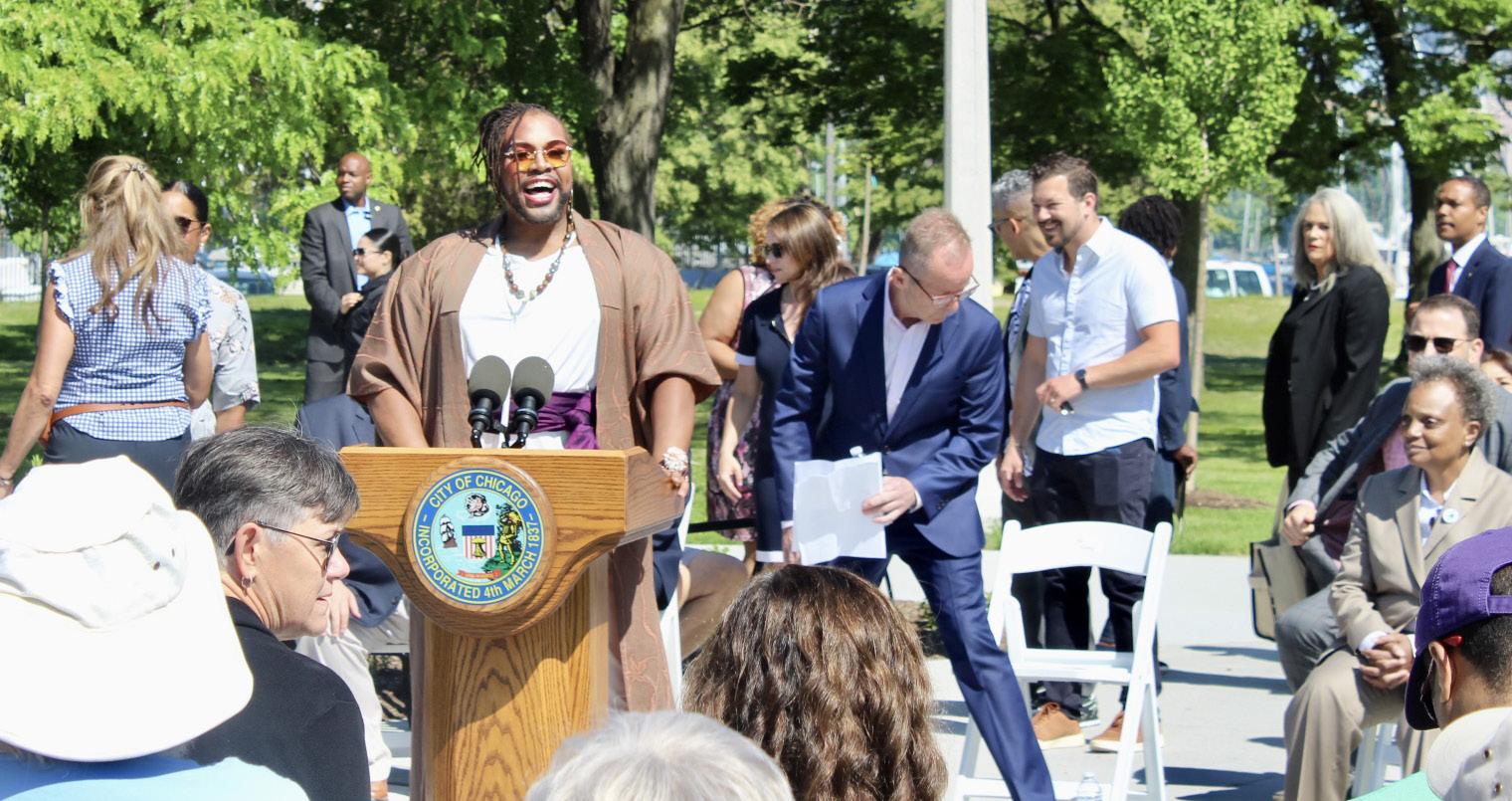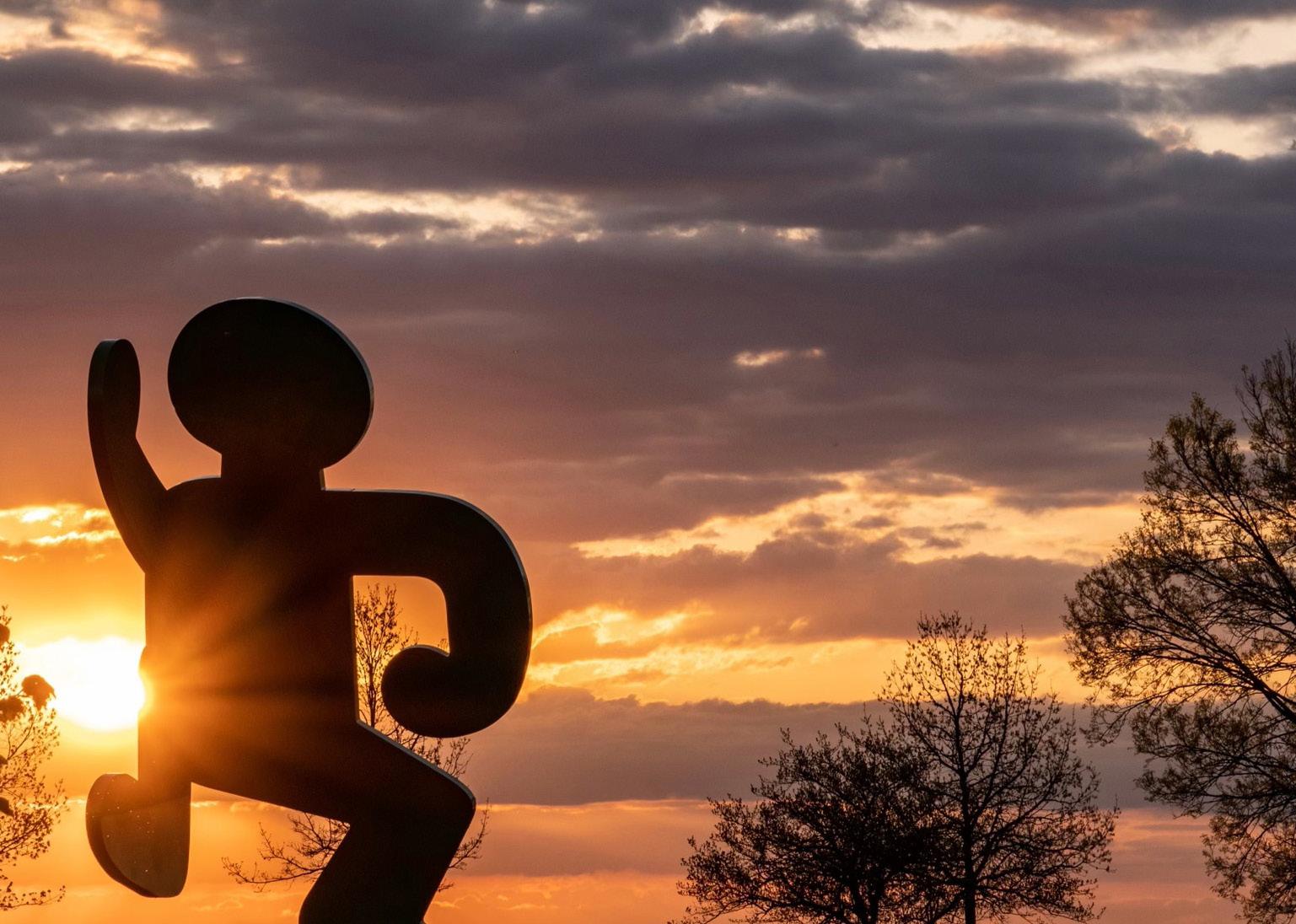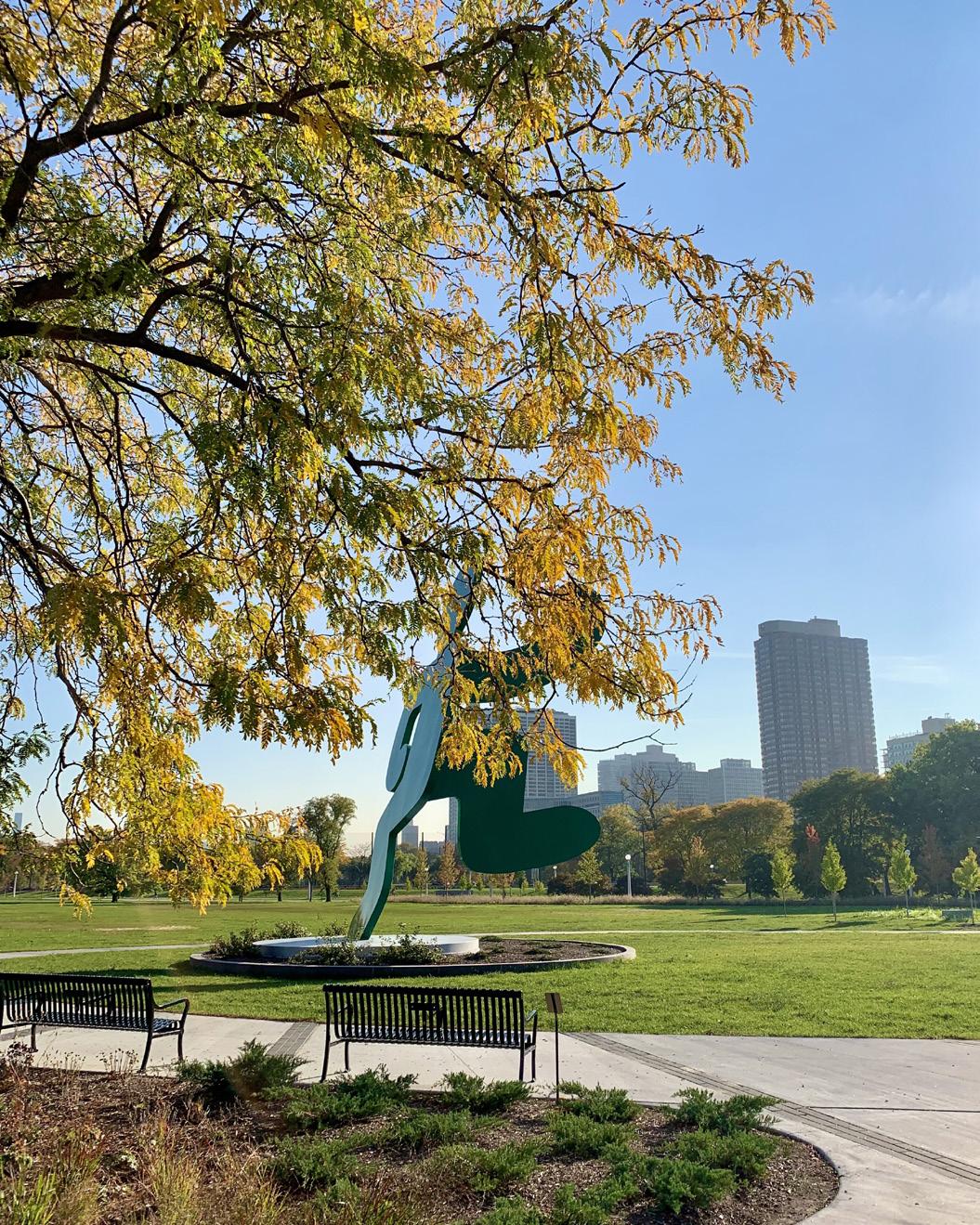
6 minute read
AIDS Garden Chicago: Now and Then
BRANCHING OUT:
AIDS Garden Chicago
Now and Then
WRITTEN BY Owen Keehnen

AIDS Garden Chicago occupies a stretch of lakefront that holds memories for many LGBTQ+ Chicagoans. For decades, the limestone blocks along the lake and the green to the east of the bike path— from the skeet-shooting range that once stood north of Diversey Harbor to the curve into Belmont Harbor—was an area known as “The Belmont Rocks.”
The Belmont Rocks was a place Chicago’s LGBTQ+ community claimed for their own. After years of oppression and living in the shadows, the simple act of being LGBTQ+ and being outdoors, with a lover or friends—or even with strangers—was revolutionary. It was an act of empowerment. The Belmont Rocks was a symbol of our right to be here, our right to exist, and our right to gather in the sunshine at a time when our bars still had blackened windows.
Coming together at the Rocks with a mix of other LGBTQ+ people fostered a sense of community years before we even believed our “liberation” was a possibility. At the Belmont Rocks we played music, we barbequed, we danced, we baked in the sun, we swam, we laughed— and we talked. When we came together we shared our stories and our lives. In the process we discovered that despite all our differences, we had an enormous amount in common.
Over the decades, the Belmont Rocks became an integral part of Chicago’s LGBTQ+ social landscape. Relationships and friendships were born here. Unions. Picnics and cookouts. Hook-ups happened here. Bar parties. Sober parties. Dance parties. Pride Parade after-parties. Rallies. Life happened here. This stretch of what was once a weed-strewn field and those tiers of jumbled limestone blocks were the stage for much of Chicago’s unfolding LGBTQ+ story.

Artwork covered many of the lakefront limestone slabs, making the Belmont Rocks a queer open-air art gallery. The art displayed upon the Rocks included everything from elaborate murals and vibrant geometric designs to painted love poems, personal symbols, and initials carved inside a heart.
If you close your eyes and listen to the wind or the waves, you can almost hear the LGBTQ+ pioneers who played, loved, and laughed here—and in the process, also quietly fostered a community. In coming together we got a sense of our collective power and learned to push back after years of harassment and oppression. However, the strength of that fledgling social structure was soon put to an even greater test by the AIDS epidemic.
When HIV hit this community, we did not scatter and run. We stood together. We suffered and mourned. We consoled and comforted. And we fought. Aided by allies, family, and friends, we raised money. We built an institutional infrastructure to provide care. We united to legislate, to protest, to volunteer, to give assistance, and to be caregivers. We made each other stronger.
During that time, the Belmont Rocks remained a place for LGBTQ+ Chicagoans to come together. With the advent of the HIV, people needed one another more than ever. Folks still gathered for cookouts and for parties, only now they gathered for memorials as well. Suffering and loss had become a part of life, but amidst the pain and the fear was the beauty of countless acts of love and compassion. We endured because we knew we were not alone in the struggle. We endured because of one another.
Activity at the Belmont Rocks had dwindled by the early 2000s when the Army Corp of Engineers announced that the area was slated for demolition as part of the shoreline erosion prevention program. The news was met with mostly indifference. By then the community had mostly relocated to Hollywood Beach. After the Belmont Rocks were bulldozed in 2003, this place of Chicago LGBTQ+ cultural significance was at risk of being forgotten.
Then events took a fortuitous turn. In 2020, the Chicago Park District announced that the area once known as the Belmont Rocks had been designated as the new site for AIDS Garden Chicago. The garden was to serve as a memorial to those lost to HIV as well as a place of reflection, learning, and inspiration to those who continue to fight the disease. A thirty-foot Keith Haring sculpture—his celebrated “Self-Portrait”—now marks the site. The piece was Chicago’s first public monument honoring the fight against HIV.

After two years of excavation, leveling, landscaping and planting, a crowd gathered to watch Mayor Lori Lightfoot cut the ribbon on the opening of AIDS Garden Chicago in June 2022. Although the area known as the Belmont Rocks was gone, AIDS Garden Chicago is a fitting continuation in this ongoing story of what we can accomplish when we come together. This garden honors the dedication, perseverance, and determination of every individual whose life has been touched by AIDS on this long trek to zero HIV infections.
AIDS Garden Chicago—a place to reflect on our past and create new memories—is also about the future. This park and this green stands to assure future generations of LGBTQ+ folks—and those who love them—that we are more than a demographic, more than a voting bloc, and more than a marketing niche. We are a family. We have played together, stood together, and when the need arose, we fought together. AIDS Garden Chicago is proof that this community— forged in the fires of so much loss and suffering—will face whatever comes and together we will endure.




The Chicago Parks Foundation was honored to lead this legacy park project to completion, managed together in partnership with the community.
We invite you to visit aidsgardenchicago.org to explore the AIDS Garden Chicago Story Archive and to get involved in helping shape the future of AIDS Garden Chicago.
Owen Keehnen is a grassroots historian, writer, and cofounder of the award-winning nonprofit Legacy Project. See Owen’s collection of Belmont Rocks memories on his Facebook page, “A Place for Us: LGBTQ Life at the Belmont Rocks”







